A Digital Audio Workstation (DAW) is a software application used to get sound from instruments or other sound-creating devices into your computer. They can be thought of as blank canvas digital recreations of the traditional mixing console.
Inside a DAW, you can record instruments; edit performances; create arrangements by altering your song structure on the fly; use and play MIDI instruments; and apply software effects to mix and master your audio, creating a single file of your finished product.
While, on one level, most DAWs do similar things, they’re all organised a little differently. But with so many DAWs available, how do you know what’s the right one for you? Luckily, we’re here with our list of the best DAWs for 2024.
In a hurry?
Here our are top five DAWs:
| Pro Tools | The de-facto industry standard, Pro-Tools is used in most professional studios for recording live musicians as well as extensive post-production studio use. It has everything you need to record, edit, mix, and master with the highest-quality and largest stock plug-in collection. Advanced Cloud Collaboration lets you work remotely with other Pro Tools users and, with its prevalence across the industry, opens new workflow possibilities. | Check the current prices |
| Ableton Live | The electronic music production flagship to which other DAWs are compared. The unique ‘Session View’ differs from most other DAWs, letting you mix and match various audio and MIDI files and treat them the same. Wrapped in a simple point-and-click environment, its customisable interface allows for ultra-fast workflow for any level of producer. | Check the current prices |
| Bitwig | Unashamedly electronic music-focused, this experimental DAW gives you an ‘open hood’ approach to creating music. Featuring ‘The Grid’, you can build your own instruments and effects from scratch using drag-and-drop blocks, all in an intuitive and creative interface. | Check the current prices |
| PreSonus Studio One | The complete production package, Studio One takes you from conception to reality with comprehensive tools for writing/composing, editing, and mixing and a dedicated mastering suite with integrated metadata tagging. Studio One is built with all the tools of traditional DAWs as well as advanced functionality for added convenience, including drag-and-drop functionality throughout. | Check the current prices |
| FL Studio Fruity Loops | Built for pattern-based beat-making, FL Studio provides a workflow that's best suited to programming drums, synths, and sound effects at unrivalled speeds. It comes with one of the broadest selections of virtual instruments, all tailored towards hip-hop, EDM, and R&B styles. | Check the current prices |
The best DAWs
1. AVID Pro Tools
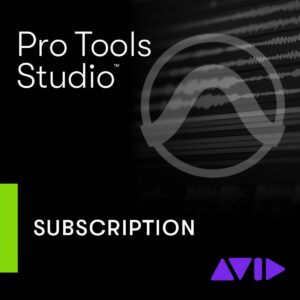 Best DAW for: Band recording and professional studios, singers and songwriters, post-production.
Best DAW for: Band recording and professional studios, singers and songwriters, post-production.
Specifications
- Operating system:
- Mac: macOS 10.14.6, 10.15.7, 11.6, 12.3 (PT 2021.12 and later with 2022.2 Plugins)
- Windows: Intel® PC Windows 10 & 11 Home, Pro, and Enterprise 64-bit Editions or Windows 10 & 11 for Workstations supported on Intel® Xeon processor-equipped machines
- Processor:
- Mac: M1 or Intel Core i5 processor
- Windows: Intel Core i5 processor
- RAM: 16GB (32GB recommended)
- Disk space: 15GB for installation
Pros
- Great for traditional band recording and mixing workflows – think of it as the ultimate tape machine
- Unique cloud collaboration features for remotely working on shared sessions with other Pro Tools users/bandmates, wherever they are
- Features good MIDI editing and an arsenal of shortcuts to speed up workflow
- Elastic audio and ‘smart tool’ allow for fast work
- Features undisputed audio fidelity and a proven mix engine
- Can be trusted for high-end applications – most records on the radio will have passed through it, and your favourite films and TV shows will be mixed on it!
- Higher-grade versions support Dolby Atmos
Cons
- Not a very creative DAW for audio manipulation
- Unsuitable for electronic music production with more emphasis on sound design
- Linear workflow doesn’t allow for much flexibility to customise to your requirements
- No VST support for smaller indie plugin developers who may not offer it
- Not updated as regularly as other DAWs, falling behind in more contemporary features
- The price of entry for more professional-grade versions is higher than most other DAWs
Summary
Pro Tools is considered by many as the industry standard and boasts many features which firmly cement its place. Its unmatched audio resolution pairs with the proven mixing and workflow engine to provide a complete solution for most audio applications. Conversely, its origin as a ‘digital tape machine’ has meant that it’s fallen behind others for more creative, electronic music production.
Shop now | AVID Pro Tools
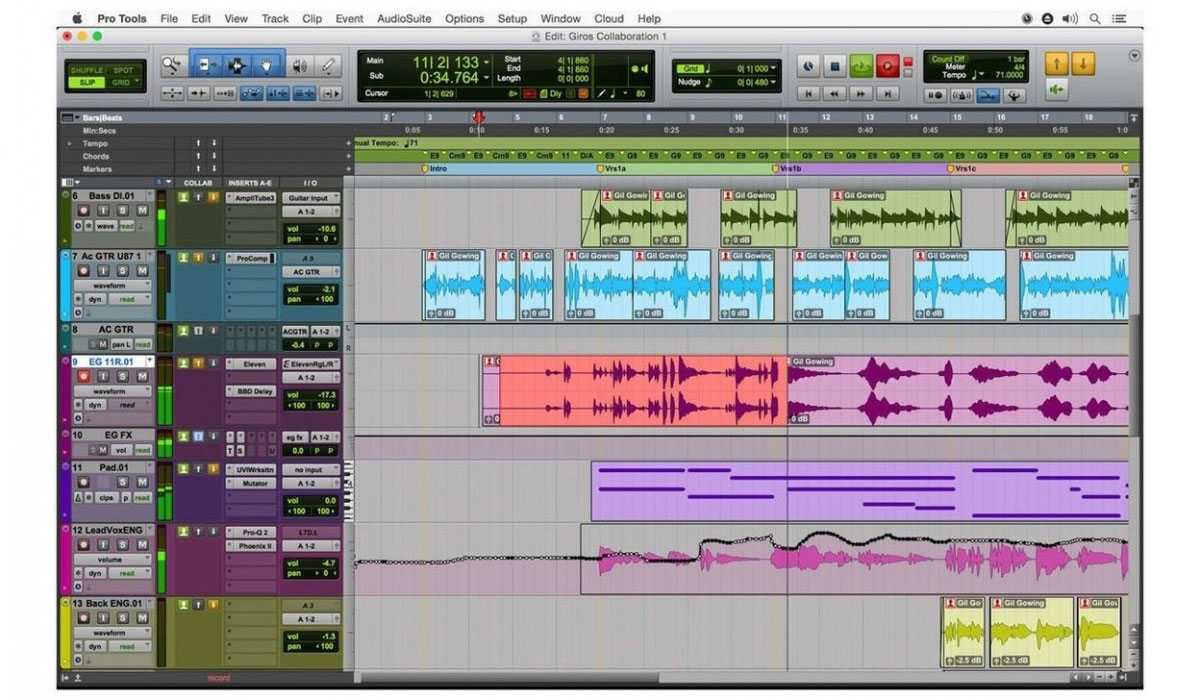
2. PreSonus Studio One
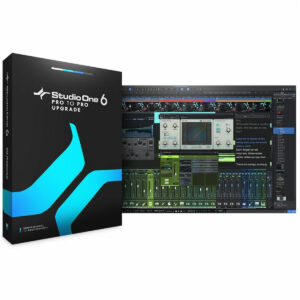 Best DAW for: The all-around musician and producer looking for a complete solution which takes you from the initial idea to the final product across all genres of music including electronic.
Best DAW for: The all-around musician and producer looking for a complete solution which takes you from the initial idea to the final product across all genres of music including electronic.
Specifications
- Operating system:
- Mac: macOS 10.14 or higher (64-bit only)
- Windows: Windows 10 (64-bit only) or Windows 11 (64-bit only)
- Processor:
- Mac: Intel Core i3 or better (Native support for Apple Silicon)
- Windows: Intel Core i3/AMD A10 processor or better
- RAM: Minimum 4 GB RAM / Recommended 8 GB or more
- Disk space: 40GB
- Resolution: Monitor with 1366 x768 resolution (Retina display recommended)
Pros
- A score editor is included, suitable for beginners, bands, guitarists, singers, songwriters, and electronic musicians who want a more creative environment to write, arrange, edit, master, and perform in
- Scratchpads and Harmonic Editing are unique features for exploring song material and chord progressions
- Intuitive interface design which can be customised to fit your requirements
- Drag-and-drop operation throughout makes adding tracks, instruments, layers, and more extremely easy
- Unique composition tools with dedicated scoring functionality
- Dedicated mastering suite
- Comprehensive metadata tagging with support for direct uploading to online publishing platforms
- Live streaming and live performance support
Cons
- Mixer console can be overwhelming for beginners
- Resource and CPU-hungry design may mean lower-powered machines struggle to keep up
- Built-in instruments and effects aren’t the highest quality
- No demo is currently available
- Less impressive MIDI functionality when compared to other DAW offerings
Summary
A true jack-of-all-trades DAW, Studio One fills the void between electronic-focused production and studio-quality audio recording capabilities.
Providing you with plenty in the box, the included effects and instruments are sufficient enough to produce quality recordings without the need for any external purchases. Though great at many tasks, it lacks a specific direction, alienating some producers used to more niche products.
Shop now | Studio One
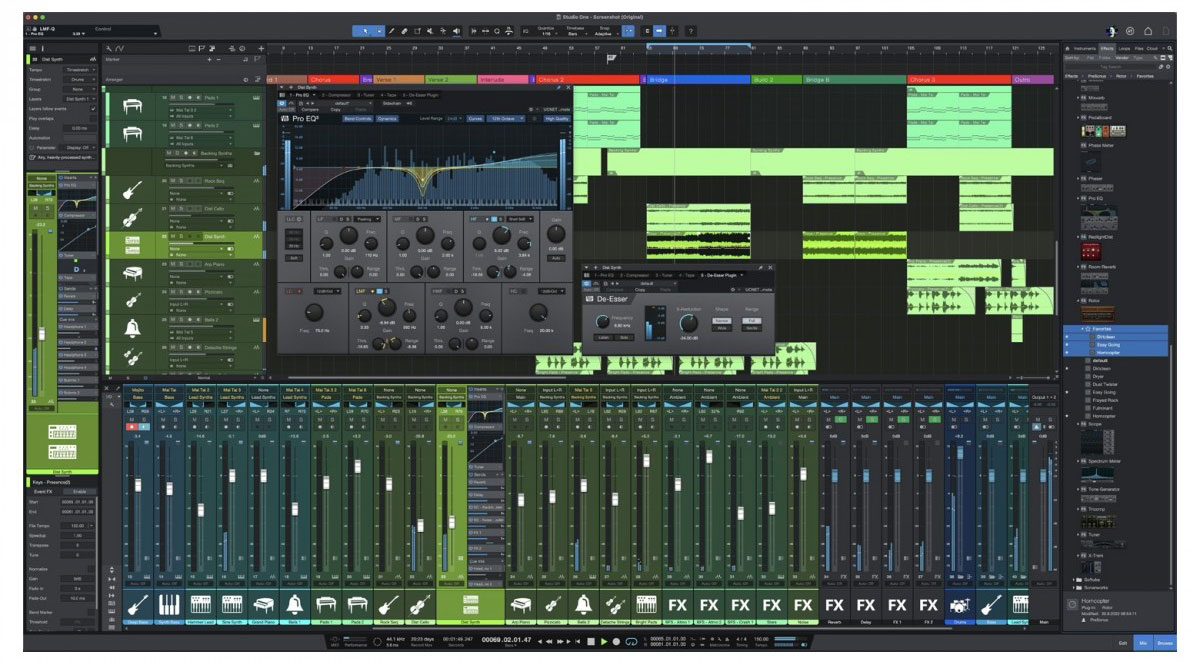
3. Steinberg Cubase
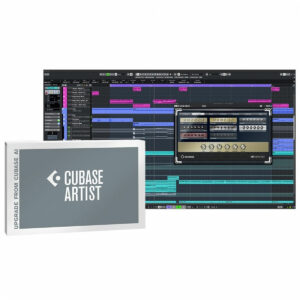 Best DAW for: Audio quality. Cubase features Steinberg’s award-winning 64-bit floating-point engine with sample rates up to 192khz.
Best DAW for: Audio quality. Cubase features Steinberg’s award-winning 64-bit floating-point engine with sample rates up to 192khz.
Specifications
- Operating system:
- Mac: macOS 11 – Big Sur or higher
- Windows: 64-bit Windows 10 (version 21H2 or higher)
- Processor:
- Mac: Intel Core™ i5 (mid-2013 or later) or Apple silicon (Native and Rosetta)
- Windows: Intel Core™ i5 (4th Generation) or AMD Ryzen
- RAM: Minimum 8GB or more recommended
- Disk space: 70GB
- Resolution: AMD R or RX series and later or NVIDIA Series 700 and later
- CPU cores: 4 or more recommended
Pros
- Excellent for beginners, band recording, singers and songwriters, score writers, as well as electronic music production, Cubase comfortably suits all
- Allows you to mix and master to a fully professional level, combined with a creative environment for composition full of helpful aids
- Suited to those without musical theory backgrounds who want the DAW to help them compose thanks to unique Chord Assistant, Scale Assistant, and more
- Comes in a variety of different versions to suit all price points
- Extremely high audio quality through its award-winning 64-bit floating-point engine with up to 192kHz sampling rate
- Surround-sound support
- Slip editing makes editing complex multi-mic setups such as drums a breeze
- Free 60-day trial is available
Cons
- Traditional design limits creativity for more experimental sound designers
- Not as well supported as other DAWs with less customer support
- Elastic audio may introduce destructive artefacts
- A limited number of audio insert slots per track
- CPU performance isn’t as optimised in other DAWs, you may encounter crashes on lower-powered machines
- Falls behind other DAWs on its feature set, noticeably the lack of a ‘folder stack’
Summary
A mainstay in the European electronic music scene since its introduction, Cubase has a lot going for it. It’s comprehensive and caters to the needs of many different types of musicians both for recording bands and electronic instruments. Unfortunately for beginners, Cubase poses a few downsides. Its lack of optimisation for lower-powered machines can result in projects crashing, causing some bumps in your creative flow.
Shop now | Steinberg Cubase
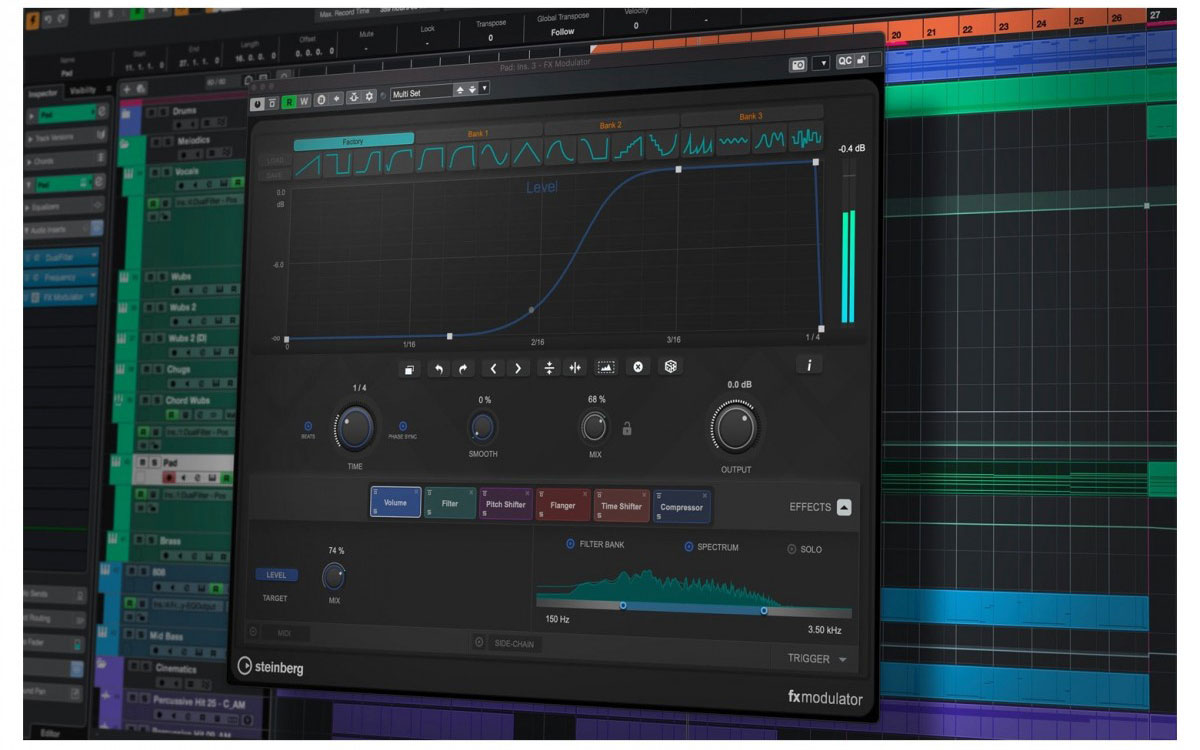
4. Ableton Live
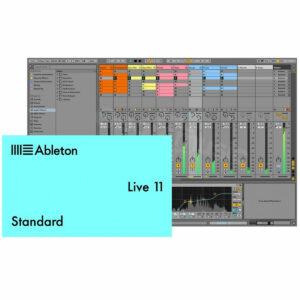 Best DAW for: Live is perfect for electronic musicians looking for a loop-based working style with flexibility and speed.
Best DAW for: Live is perfect for electronic musicians looking for a loop-based working style with flexibility and speed.
Specifications
- Operating system:
- Mac: macOS High Sierra 10.13 to Ventura 13
- Windows: 64-bit Windows 10 (version 21H2 or higher)
- Processor:
- Mac: Intel Core™ i5 (mid-2013 or later) or Apple silicon (Native and Rosetta)
- Windows: Intel® Core™ i5 processor or an AMD multi-core processor
- RAM: Minimum 8GB or more recommended
- Disk space: 76GB
- Resolution: 1280×800
Pros
- Extremely well supported with Certified Ableton Tutors and extensive video tutorials
- Fantastic-sounding built-in devices, instruments, and effects
- Extremely fast and customisable workflow
- Not just a DAW but a creative instrument itself, ideal for live performances with Session View
- Powerful editing tools let you warp and stretch audio to correct timing errors with no artefacts
- Includes an open environment to create your own software
- You can try Ableton Live 11 for 90 days on a free trial
Cons
- Features for editing live audio such as Comping were only recently introduced – the DAW still lacks other traditional splicing tools
- A limited number of send and return signals hinder traditional mixing techniques
- Doesn’t support ARA2
- Plugin delay compensation is still not optimised when compared to other DAWs
- The complete Live 11 Suite with all plugins and sounds is a big investment
Summary
Ableton Live is an excellent piece of software which can be thought of as both a DAW and an instrument. The open-ended design gives you the opportunity to write your own instruments and effects which can be performed in real-time, making it ideal for live DJs, producers, and musicians.
This isn’t to say it’s complex, as it caters well to beginners with an outside-the-box approach that breaks down conventional mixing desk approaches like other DAWs. If you’re a producer working exclusively with bands and acoustic instruments, it would be wise to look elsewhere as its lack of mixer window and essential audio editing tools make conventional studio processes difficult.
Shop now | Ableton Live
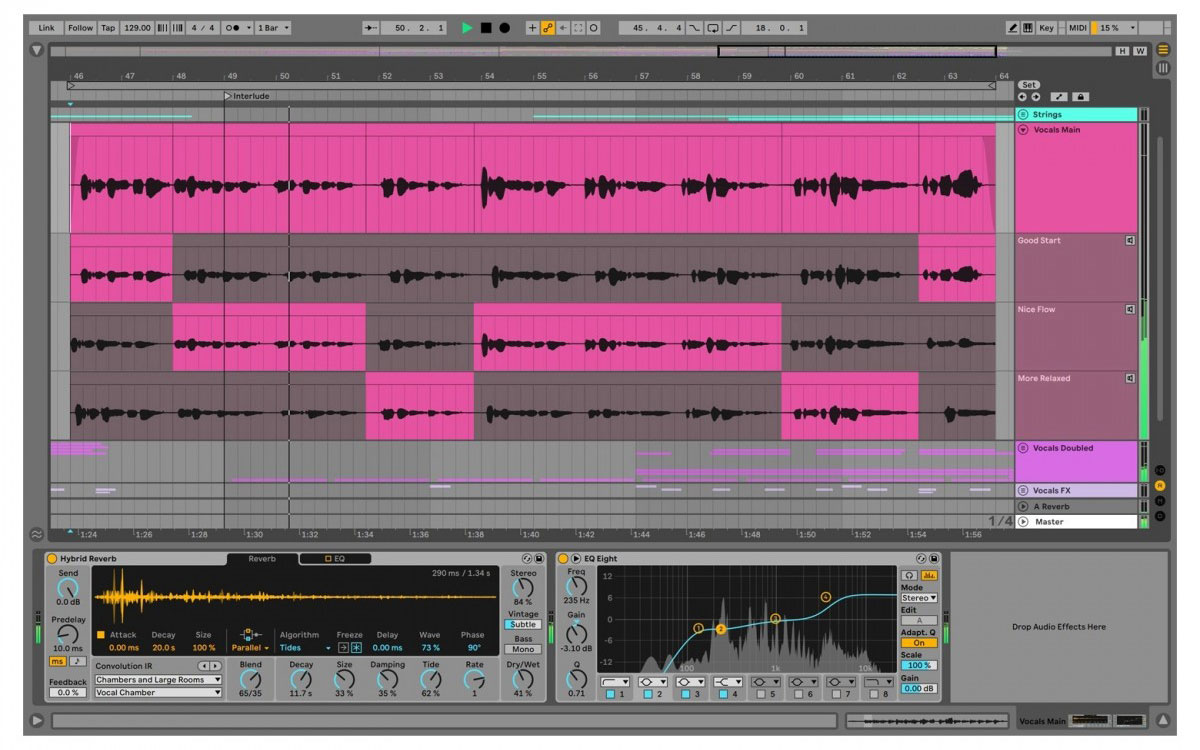
5. Bitwig Studio
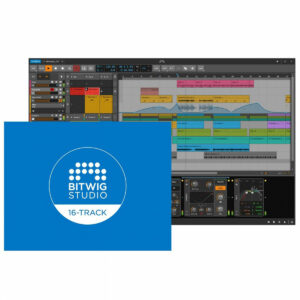 Best DAW for: Bitwig is unashamedly electronic music-focused and experimental – it goes as deep as you want (like Ableton Live with the hood open), but it’s still accessible.
Best DAW for: Bitwig is unashamedly electronic music-focused and experimental – it goes as deep as you want (like Ableton Live with the hood open), but it’s still accessible.
Specifications
- Operating system:
- Mac: macOS 10.14 or later – including Monterey
- Windows: 7 – 11 64-bit
- Linux: Ubuntu 20.04+ or any modern distribution with Flatpak installed
- Processor:
- Mac: 64-bit Intel or Apple Silicon CPU
- Windows: Dual-core AMD or Intel CPU or faster with SSE4.1 support
- Linux: 64-bit dual-core or better x86 CPU with SSE4.1 support
- RAM: Minimum 4GB or more recommended
- Disk space: 12GB
- Resolution: 1280×768
Pros
- The only DAW supported on Linux systems
- Completely customisable, flexible modular system
- Unapologetically designed for electronic musicians, making it perfect for electronic sound design
- Create your own custom plugins and effects using “The Grid” open environment
- Consistently updated with new features and modules which can be accessed for free with Upgrade Plan packages
- Unrivalled level of modulation flexibility, letting you add movement to any parameter across your entire mix
- Comes with an impressive range of content from 10GB of sounds, 36 modulators, 13 instruments, and 41 world-class audio effects
Cons
- Non-linear design isn’t ideal for traditional recording, mixing, and mastering applications
- Some basic production tools missing such as pitch correction
- Audio editing tools aren’t as sophisticated as other DAWs such as Pro Tools
- No video capabilities rule it out for any post-production studios
Summary
An outside-the-box DAW, Bitwig is a truly unique experience. It’s clear to see that this DAW is aimed at electronic musicians with its modular layout and flexible customisation.
While it offers an array of special features such as the open-ended “Grid” environment to write your own effects, lots of electronic musicians record real acoustic instruments and augment them in their DAW. Unfortunately, Bitwig’s audio processing isn’t as sophisticated as other DAWs.
It’s available as a fully-functioning trial demo, so I’d recommend grabbing that to find out if it’s for you.
Shop now | Bitwig
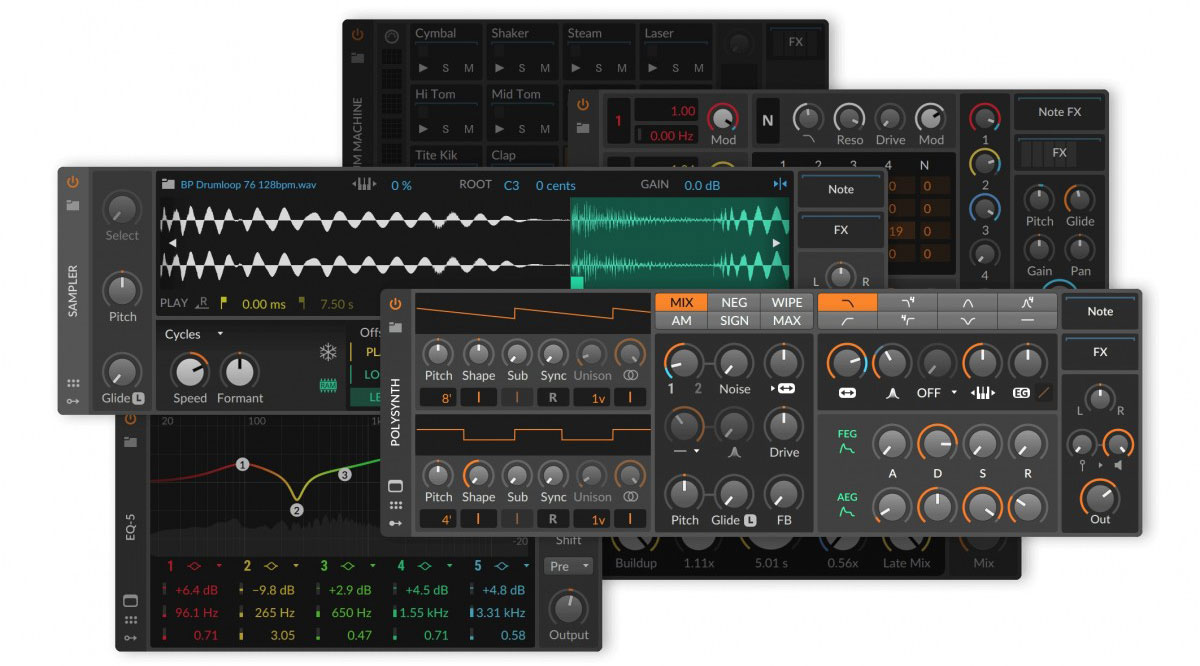
6. Reason
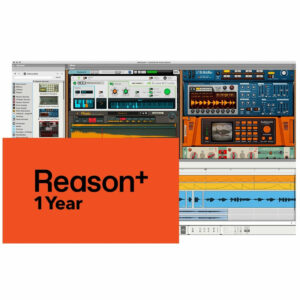 Best DAW for: Producers who are looking to bridge the gap between hardware workflow and digital flexibility with internal CV connectivity and free wiring between modules and parameters.
Best DAW for: Producers who are looking to bridge the gap between hardware workflow and digital flexibility with internal CV connectivity and free wiring between modules and parameters.
Specifications
- Operating system:
- Mac: macOS 10.13 or later (64-bit)
- Windows: Windows 10 or later (64-bit)
- Processor:
- Mac: 64-bit Intel or Apple Silicon CPU
- Windows: Dual-core AMD or Intel CPU
- RAM: Minimum 4GB or more recommended
- Disk space: 25GB
- Resolution: 1280×768
Pros
- Free, fully-functioning 30-day trial to get to grips with the software
- Unique rack-based mixing which lets you mix and match multiple ‘rack extensions’
- Devices can be used as third-party plug-ins in other DAWs
- Excellent SSL-modelled mixer window
- The complex routing system provides an infinite number of combinations between rack extensions
- Comes with a reasonable (pun intended) number of instruments and effects
- Supports VST3 plugins, allowing you to use the internal modular CV connectivity and Reason Racks MIDI FX to add features to existing plug-ins or create your own
Cons
- Hardware-focused design isn’t as intuitive as ‘blank canvas’ DAWs such as Ableton or Bitwig
- No surround-sound support for modern Dolby Atmos requirements
- Lacklustre audio editing tools
- No support for scoring or composition with no video support
Summary
A not-so-popular DAW among big industry names, Reason deserves a shot at the limelight. The closest thing you can get to integrating analog-style workflow in the digital world, the Rack system of Reason is a fantastic tool to create unique plug-in chains and signal flows.
VST3 support even means you can enhance plug-ins with features that they don’t ship with, amazing right? But for anyone after a ‘blank canvas’ approach like Ableton or Bitwig, Reason’s layout won’t be the right choice for you.
Shop now | Reason
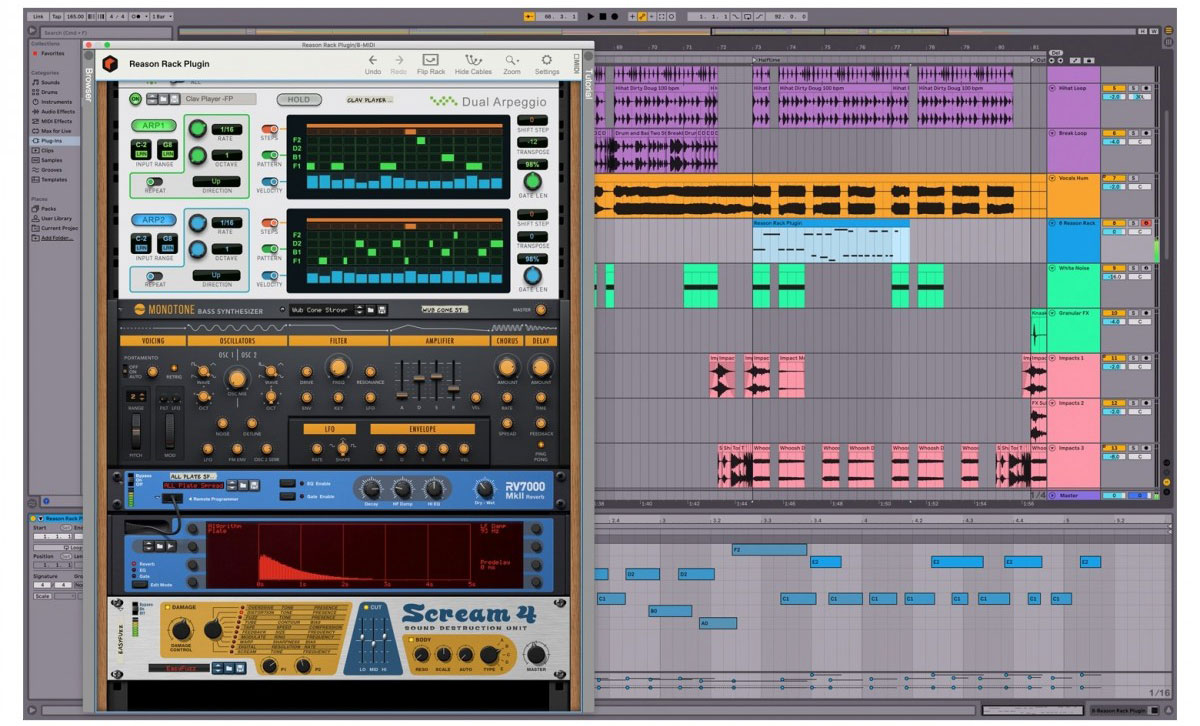
7. FL Studio Fruity Loops
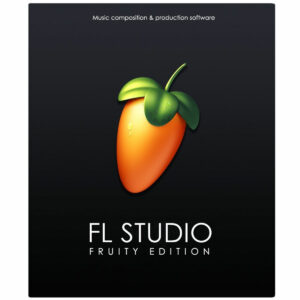 Best DAW for: Naturally suited to loop-based producers in the EDM, hip-hop, and trap world with pattern-based composing
Best DAW for: Naturally suited to loop-based producers in the EDM, hip-hop, and trap world with pattern-based composing
Specifications
- Operating system:
- Mac: macOS 10.13.6 or later
- Windows: Windows 7, 8, 10 or later
- Processor:
- Mac: 64-bit Intel or Apple Silicon CPU
- Windows: Dual-core AMD or Intel CPU
- RAM: Minimum 4GB or more recommended
- Disk space: 4GB
Pros
- It’s the definitive DAW for electronic music production
- Extremely simple interface with a little learning curve to get started
- Its popularity in electronic genres has gained a huge user base with lots of online tutorials for complex processes, making it easy for beginners to get started
- It comes with a huge range
- Fully-functional unlimited trial will help you get to grips with the workflow
- Video formats are supported for A/V processing
- Lifetime of free updates
Cons
- Would not be the DAW of choice for working with a traditional band, orchestration, mixing, or mastering
- Inflexible audio recording capabilities
- No notation editing, making it less useful for composers
Summary
There’s little else to say other than if you want to produce beats, FL Studio Fruity Loops is a must. It’s fast, easy, and comes with a lifetime of free updates and more plug-ins and instruments than you will likely ever use. Whilst it’s unashamedly geared towards electronic music production, recording, editing, and integrating real hardware instruments and audio is going to be a struggle.
Shop now | FL Studio Fruity Loops
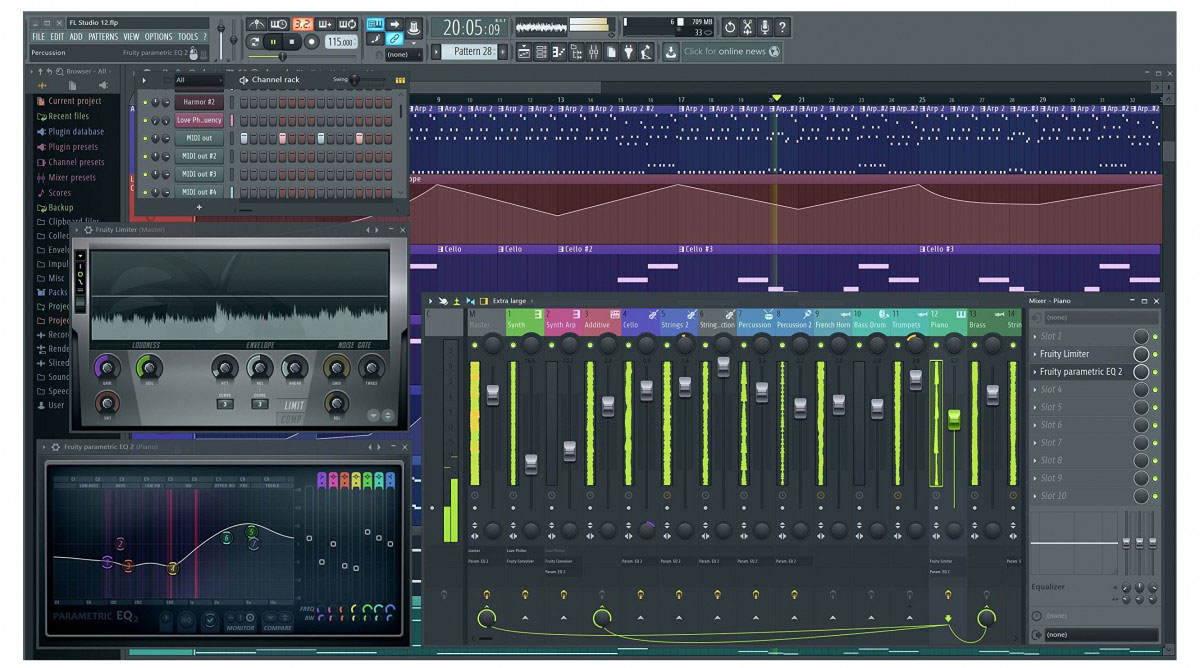
Things to consider when buying a DAW
Now you’re an expert on each DAW and the pros and cons of the major products, it’s time to take a minute and understand the final things to consider before making your purchase.
Virtual plug-ins
The price of entry with each DAW differs not only because of varying functionality and features but also because of what’s included. I’m talking about plug-ins.
Plug-ins come in two common formats: VSTi instruments and VST effects. Virtual Studio Technology Instruments, or VSTis, are software plug-ins that emulate common real-world instruments. These could be software drum kits, synthesizers, guitars, pianos, orchestral stringed instruments, and so much more.
VST effects are software effects that alter your audio in the same way you would do with traditional studio hardware. These can be everything from traditional reverbs, compressors and EQs, utility plug-ins such as vocal pitch-correction, or much more experimental glitch effects and granular processors.
They vary significantly between DAWs. Bitwig Studio 4, for example, comes jam-packed with over 80+ VST effects for creative manipulation of your tracks whereas Fruity Loops Studio All Plugins Edition comes with over 100 VSTi Instruments.
Track limits and DAW ‘Versions’
Now, some entry-level DAWs limit the total number of available tracks you have at your disposal. This helps you save money while still getting all the essential tools you need to make music. The de-facto industry standard, Pro Tools, offers Pro Tools Artist with a limitation of 32 audio and 32 MIDI channels, whilst the ever-popular Ableton offer Live Intro, limited to only 16 audio and MIDI tracks.
More tracks allow you to do “more” with the software; layering more instruments, recording more parts, and using more VSTis – but the number of tracks doesn’t always correlate to how good the software is. Plus, you can always upgrade later if you prefer to start smaller and save some money for other audio tools you need.
Most importantly, DAWs are an investment. To make sure you get the most for your money and a DAW that fits your needs, we’d always recommend testing a demo! Most DAWs come with fully functioning limited demos, letting you get to grips with how it works and decide if it’s the right investment for your production career.
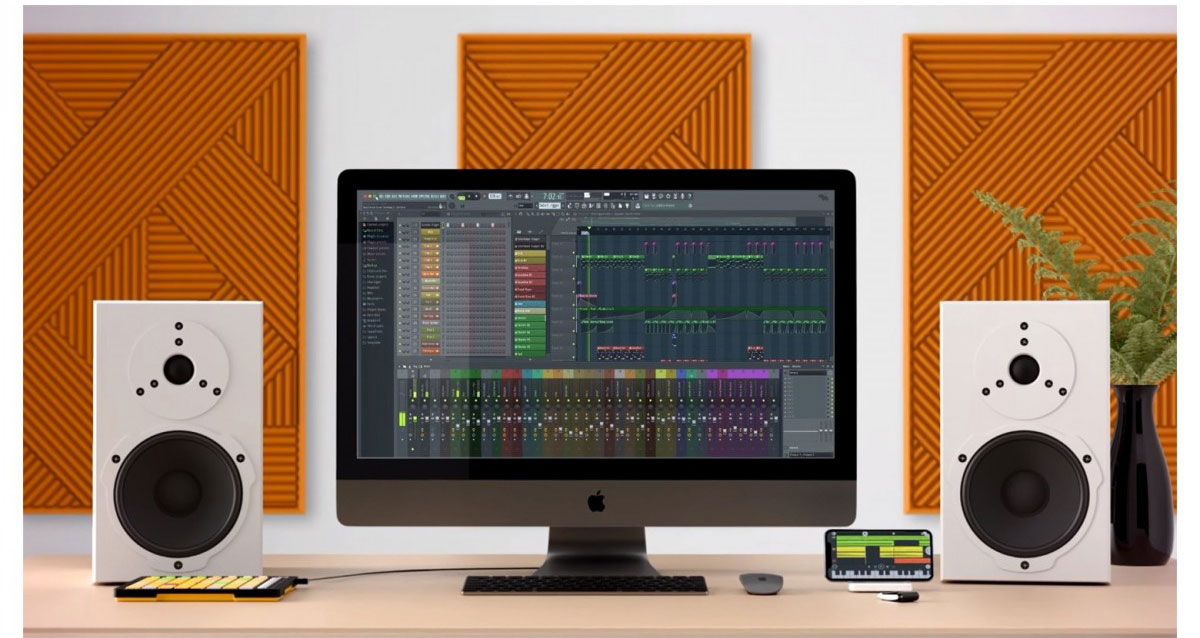
What about an audio interface?
Chances are when looking for DAWs you’ve come across the term “audio interface”. So what is it? Simply put, an audio interface is the hub that your recording studio will be built around. An essential piece of equipment, it serves many functions, including converting signals from hardware instruments and equipment such as microphones and instruments into digital audio that can be used in your DAW.
Managing the connectivity between equipment you might have in your studio and your DAW, audio interfaces will offer microphone preamps, instrument-level inputs for guitars and other such equipment, and outputs suitable for both headphones and studio monitors.
Many interfaces will often include MIDI connectivity. With MIDI inputs, you can connect external hardware such as synthesizers or drum machines and use these to trigger software plug-in sounds in your DAW.
Conversely, MIDI output connectivity allows you to send MIDI signals that you have created inside your DAW to trigger external MIDI hardware such as sound modules, drum machines, and synthesizers before capturing their sound as audio back into your audio interface and into your DAW.
So does every musician or producer need an audio interface?
You might wonder why you can’t just use your computer’s headphone jack or built-in microphone with your DAW. Well, even for electronic musicians who want to utilise software instruments and effects found within your DAW and don’t use microphones or instruments such as guitars or bass, an audio interface is a must-have.
Although you could go without, the trade-offs in quality are significant. Audio interfaces offer superior analog-to-digital and digital-to-analog conversion and come equipped with features that are custom-made for music production, like proper headphone amplification.
As well as bridging the gap between your computer and any external gear you may or may not have, an audio interface significantly improves the audio quality when listening back to your music through your DAW. This is an extremely important feature to help you critically listen to your music to get the best sound possible.
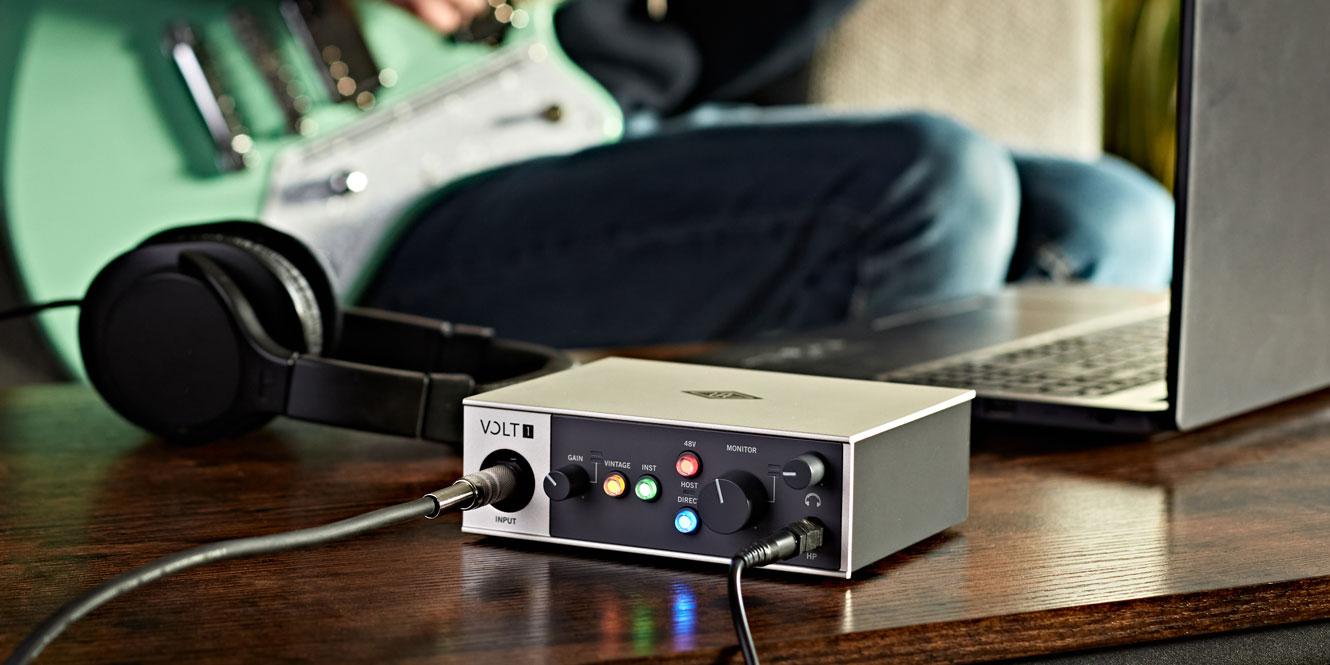
FAQs
What is the #1 DAW?
The only DAW that does it all, PreSonus Studio One is the best DAW for 2024. Combining customisable workflow with world-class virtual instruments and effects and a dedicated mastering suite, no other DAW offers as much to as many kinds of producers and musicians.
Which DAW is most used?
There’s only one answer when it comes to the most popular DAW for music production and that’s FL Studio’s Fruity Loops. Its sample and loop-oriented design and integrated sequencer allow producers to quickly lay ideas and beats down at lightning speed, bolstering its appeal to both beginners and seasoned professionals.
Which DAW is best for beginners?
For beginners looking to get into music production, Ableton Live 11 Standard is the best DAW available.
- Ableton Live 11 Standard
- PreSonus Studio One 6 Professional
- Avid Pro Tools Ultimate
- Steinberg Cubase 12
- FL Studio Fruity Loops All Plugins Edition
- Bitwig Studio 4
- Propellerhead Reason 12
Final thoughts
There is no right or wrong DAW, only what’s right or wrong for you. The DAW that you should choose will largely depend on how you want to produce music and what workflow suits your style.
Some DAWs unapologetically lean on one specific niche market such as Fruity Loops’ dominance in beat-making or Ableton’s prevalence in live performance – and it’s perfectly OK to not gel with these if they don’t suit your workflow. Don’t feel pressured into using one specific DAW just because a friend or YouTube video told you to!
We encourage you to try out as many of the demos as possible to find which works best for you, and hopefully our list of the best daws for 2024 has helped you narrow down which ones to test. This will make it much easier to give up your hard-earned cash for a significant investment that will make your dreams of producing a reality.

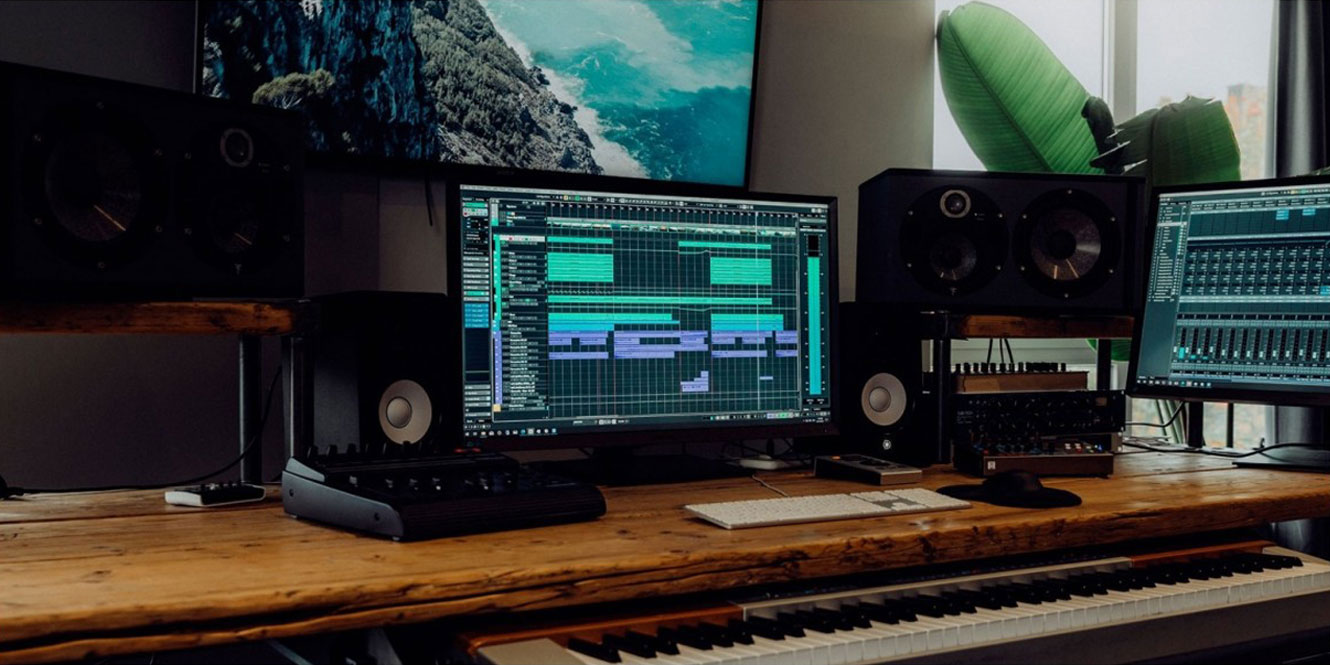











0 Comments